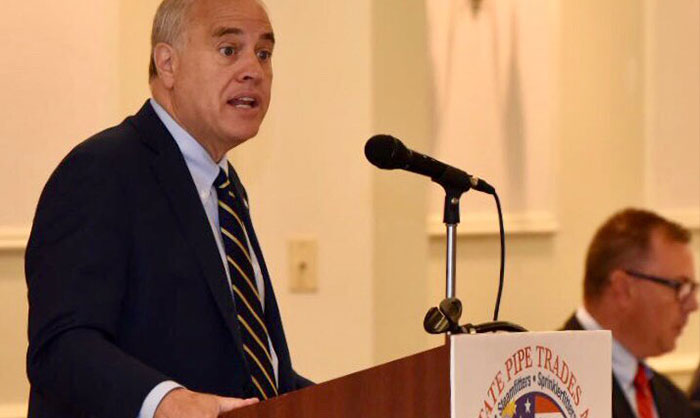Photo Courtesy of Comptroller DiNapoli’s Office
“We cannot go backwards on health care and force people to choose between buying groceries or seeing a doctor,” Comptroller DiNapoli warned.
By Forum Staff
Proposals by President Donald Trump and some members of Congress could cut federal funding for Medicaid and other publicly funded health plans, according to recently released report by State Comptroller Tom DiNapoli.
The analysis, “7 Million and Counting: More New Yorkers Benefit from State Health Coverage,” examines the expansion of Medicaid and other state healthcare programs over the last 10 years that now cover more than a third of the state’s estimated 19.8 million residents. The report found that the number of people covered by Medicaid and other major State programs rose by 57 percent over the past decade, to more than 7 million, largely due to enactment of the Affordable Care Act and other changes in federal and state healthcare policies.
“There are disturbing calls in Washington to repeal the ACA and make radical changes to Medicaid,” DiNapoli said. “We cannot go backwards on health care and force people to choose between buying groceries or seeing a doctor. We need more people to have access to quality health care, not fewer. These cuts would also impact the State budget and require difficult decisions to cover shortfalls.”
Medicaid, Child Health Plus, the Essential Plan and subsidized coverage through the State’s health insurance marketplace, New York State of Health, cost a total of more than $75 billion in State Fiscal Year 2017-18.
Medicaid, according to DiNapoli, covered a monthly average of nearly 6.2 million people in SFY 2017-18. Medicaid enrollment in the state historically has been concentrated in New York City, where enrollment rose 28.6 percent over the past decade.
Spending for New York’s Medicaid program totaled $69.4 billion in SFY 2017-18, an increase of nearly $24 billion, or 52.4 percent, since SFY 2008-09. Federal funding paid for 54 percent of state Medicaid costs in the last fiscal year and represented the majority of the spending growth in the previous decade. Federal resources support even higher percentages of the spending for the other major health coverage programs funded through the State budget.
In 2015, New York joined Minnesota as one of only two states in the nation to establish a Basic Health Program (known in New York as the Essential Plan), a low-cost health insurance option authorized by the ACA and largely funded by the federal government. The Essential Plan is available to New Yorkers under age 65 that meet certain income requirements and are not eligible for Medicaid, CHP or affordable employer-sponsored coverage. Over the first three years of operation, enrollment in the Essential Plan rose to nearly 729,000 individuals. That number is projected by the Division of the Budget to grow to about 742,000 by 2022.
CHP provides subsidized coverage for uninsured children under age 19 who are not eligible for Medicaid and live in homes with incomes up to 400 percent of the federal poverty level. CHP provided coverage to 350,495 children in SFY 2017-18. The program was initially funded only by the State, but in 1997 New York began receiving federal funding to support a portion of the program costs, which the ACA subsequently increased. As a result, the federal share of spending on New York’s CHP program has grown to approximately $1.7 billion out of the $2 billion in total program costs.

